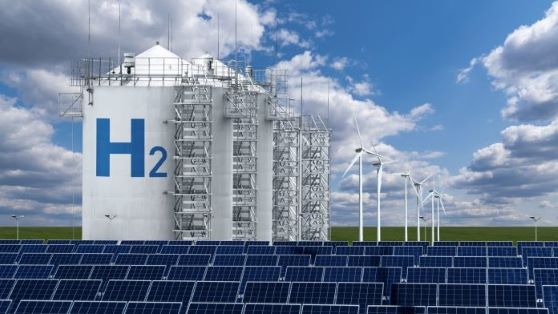
Energy Modelling Lab has analyzed the future energy market in Northern Europe that will develop under the green transition. The analysis was an assignment from COWI. It has been used as a reference in the report Roadmap to a Future, Danish hydrogen infrastructure, published by the CIP Foundation in May 2023.
The analysis focuses on Denmark, Norway, Sweden, Germany, Poland, Holland, Belgium, and UK. It probes the potential future markets of energy and fuels including PtX fuels from now until 2050.
Based on data from the Danish Energy Agency, the Danish production of electricity is expected to increase by almost 900 % by 2050. The increase is primarily due to offshore wind parks. It’s assumed that the offshore wind parks will be established in connection with planned “energy islands”; two to three in the North Sea and one in the Baltic Sea. Also, there are plans to establish electrolysis facilities and we assume they will be established on the energy islands.
Domestic demand
Domestic electricity demand is expected to remain almost constant due to energy-saving measures. But the overall expected increase could be about sevenfold from now until 2050, due to the planned expansion of PtX facilities. The bulk of the potential electricity production would thus be used for the production of green hydrogen for export. Denmark could potentially produce one-third of the total green hydrogen produced in the area, that our analysis covers.
The demand for hydrogen in Northern Europe is estimated to grow dramatically. According to the prognosis in the analysis, Holland, Belgium, and Germany will be the main purchasers. The estimated value of the potential, Danish green hydrogen export is 100 billion DKK pr. year.
Germany or Sweden
The prognosis is based on the assumption, that Germany’s capacity for hydrogen production will remain rather limited. This assumption relies on calculations showing that Danish offshore wind parks will produce slightly cheaper electricity than German facilities. Meanwhile, the likelihood that Germany will establish a large-scale production remains high.
An alternative scenario not included in the published analysis showed that Sweden could become the main purchaser of Danish-produced hydrogen by 2050. This is mainly due to estimates showing that production costs in Sweden are higher than in Denmark.
Energy Modelling Lab updated the Open Nordic TIMES model (ON-TIMES) and developed it further to the Northern Europe TIMES model (TIMES-NEU). The TIMES energy systems modelling framework is internationally recognized and developed by an IEA working group.

MODELLING
Energy Modelling Lab has updated the Open Nordic TIMES model (ON-TIMES) and developed it further to the Northern Europe TIMES model (TIMES-NEU).

SCENARIO ANALYSIS
Energy Modelling Lab has probed on the future energy market that will develop under the Green Deal on climate neutrality by 2050.

RESULTS
Results and scenarios are collected in the report mentioned above.
Duration: 2022-2023
EML Team: Kenneth Karlsson, Ida Græsted Jensen and Andrea Marin Radoszynski
Client: COWI
Budget: DKK 450,00
Reference: Claus C. Rebien, Vice President, Cowi
Collaborators: Brinckmann
Model: TIMES-NEU
Report: Baggrundsnotat – Analyse af efterspørgsel efter PtX produkter
